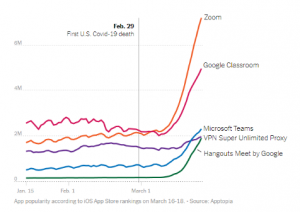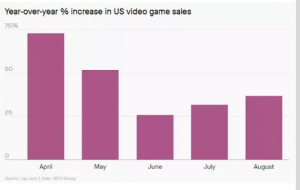The ongoing worldwide pandemic, COVID-19, has taken a toll on every citizen of the world. It has affected all of us in one way or another. The way we live, work, play, and learn has all been changed and nobody knows if we can go back to the ways we were, ever. To slow track, the spread of this deadly virus, the governments have taken strong initiatives that although necessary have strained the entire fabric of society including our mindset.
Many of us have accepted the new normal and it would not be wrong to say that the new normal has dawned on us with some good habits, that’s my way of looking at the glass. Nonetheless, the core of the life we have spent during the high wave of this pandemic is the Internet. From students to business owners and employees, from government officials to educators and policymakers, everyone has had their share of internet usage and the way internet providers and technology manufacturers have supplied to the demand has been commendable.
It is the internet that has kept us sane throughout all these months by constantly updating us about the world news, has kept us entertained when there was no recreational facility, has made us learn new skills, has allowed us to work and study from the luxury of our homes, and has acted as a catalyst in us getting the necessities of life. Had this outbreak erupted two decades ago, it would have been a total catastrophe.
For the ones who do not find relatability in the fact that the internet supported us every second of this pandemic certainly need to switch to a better internet service provider and for that, I recommend you check out Spectrum bundles.
The rise and sustainability of digital technology have helped us get through the past months and would better the time to come as well. Through the benefit of digitalization, we got the first rated news content and advice about COVID-19. The United Nations has shared that almost 167 countries of the world supplied information to their masses with the help of portals, social media platforms, and mobile apps. In addition to this, countries were also able to advise the general public about the dos and don’ts of COVID-19 that helped significantly in the control of this virus.
Moreover, artificial intelligence (AI) and the digitalization of data has progressed to the point that it helped diagnose and monitor the COVID-19. An artificial intelligence company based in South Korea developed a free of cost COVID-19 diagnostic software for early detection and assessment of the virus.
Increased usage of the internet
With nearly all recreational activities being called off and people being confined indoors, the internet greatly helped in almost every way. Most of us have adopted the new lifestyle and now work or study from home, turn to Netflix for entertainment, go with telemedicine when getting sick, and use Houseparty to hang out with friends. Following the findings of the New York Times, the popularity of applications allowing us to work or learn from home has increased severely during the past few months:

OTT Platforms
A study has reported that almost every adult U.S. citizen has subscribed to at least more than two streaming platforms during the COVID-19 crisis. Now that people had no access to the outer world, the only medium of entertainment that kept us hooked was the online video streaming platforms. Since 2018, streaming services were coming up with more original content than traditional pay-TV and it continued in the pandemic too. Streaming services like Netflix, Amazon Prime Video, Hulu, Apple TV+, HBO Max, and many more streaming devices have made our quarantine a lot better.
Gaming Zone
User engagement in gaming has seen a skyrocketing surge in the past couple of months. A 75% increase in data usage for online gaming has also been observed. Avid as well as novice gamers have made sure to invest proper time and energy in scoring points in online single and multiplayer games. The year-over-year percentage increase of video game sales in the U.S. is projected as

Furthermore, as per year to date statistics, video game sales were increased by 23% than the last year amounting to the value of 29.4 billion USD.
Work and Study from Home
The continuity of work and study during the quarantine months can principally be subjected to the greatness of the internet. Online platforms made it possible to connect millions of workers and students to their respective offices and schools. Educators took a path to e-learning by carrying out their lectures through digital platforms like Google’s Hangouts and Google Classroom, Zoom sessions, Microsoft teams, and Alibaba’s DingTalk. According to the world news leader, CNBC, more people started using the Zoom application in the starting months of 2020 than in all of 2019. Moreover, Twitter has announced a work from home facility forever for its employees.
Online grocery shopping
The whole world has observed a substantial growth trajectory of online retail in the past few months. Everyone from bachelors to families resorted to using online medium for shopping especially that of daily use items to reduce contact and chance of the transmission of the virus. Had there been no such availability, being confined to our homes for months would have been impossible.
Medical aid
Telemedicine and fitness applications have become an alternative to going to hospitals during the hard months of 2020. With the intention of staying healthy and fit while being inside, online apps have played a great role.
Epilogue
Digital technology has become imperatively essential during the past few months. During the time of social distancing and quarantine, the internet came to our rescue in all aspects and there is no going back from this point. We have now learned to live and stay connected while being distant through the internet. On account of all the above information, it is suggested that the world will keep on relying on digital technology moving forward as well.

